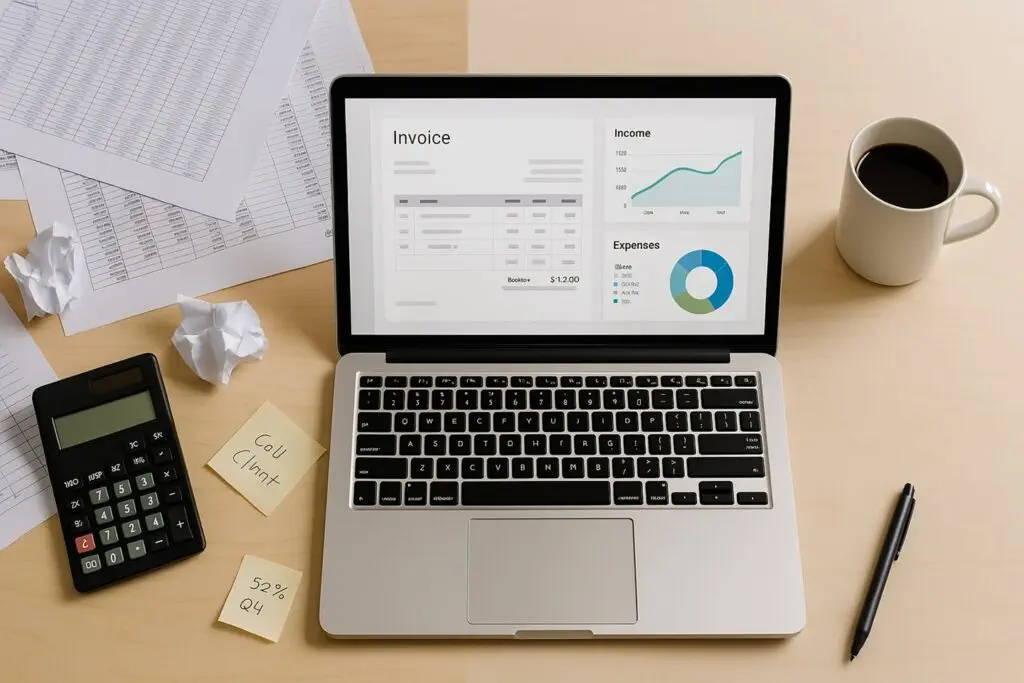For many small business owners, managing invoices starts with familiar tools like Excel spreadsheets. While spreadsheets are versatile for organizing data, they may not be the best fit for handling invoicing tasks. As your business grows, the limitations of spreadsheets become more apparent, and finding a better solution becomes essential. Transitioning to professional invoicing software can streamline your processes, reduce errors, and enhance your overall efficiency.
Understanding the Limitations of Spreadsheets
Relying on Excel spreadsheets for invoicing can be limiting in several ways. Spreadsheets require you to manually enter data, which increases the risk of human errors such as typos or incorrect formulas. These mistakes can lead to inaccurate invoices, affecting your cash flow and professional reputation. Additionally, Excel isn’t designed specifically for invoicing, so features like automation and integration with payment gateways are lacking. The need to manually update and manage each invoice consumes valuable time that could be better spent on growing your business.
The Advantages of Using Professional Invoicing Software
Professional invoicing software offers a comprehensive solution that addresses the shortcomings of spreadsheets. By automating repetitive tasks, it reduces the risk of errors and helps you get paid faster. Invoicing software stores client information, tracks invoice statuses, and sends notifications—all in one centralized system. Features like automatic tax calculations, currency conversions, and integration with multiple payment gateways make it easier to manage diverse client needs. With these tools, you can streamline your invoicing process and focus more on your core business activities.
Customization and Professionalism in Invoicing
First impressions matter, and the same goes for invoices. Using professional invoicing software allows you to create customized and professional-looking invoices that reflect your brand identity. With a variety of invoice templates available, you can easily add your logo, adjust color schemes, and choose layouts that best suit your business. Customization options enable you to present a polished image, which can enhance client trust and reinforce your brand consistency across all communications.
Automation and Efficiency in Invoicing Processes
Automation is a game-changer when it comes to efficiency. Invoicing software can automate numerous tasks that you would otherwise need to do manually. For instance, you can set up recurring invoices for clients who are billed on a regular basis, eliminating the need to recreate invoices each time. The software can also send automatic reminders to clients about upcoming or overdue payments, reducing the time you spend on follow-ups. This not only saves time but also improves your chances of getting paid promptly.
For more insights on maximizing your invoicing system, check out our article on Best Practices That Utilize Your Invoice Management System.
Cost and Time Savings with Invoicing Software
Switching to invoicing software can lead to significant cost and time savings. Manual invoicing processes are time-consuming and can divert your attention from more productive tasks. In contrast, invoicing software makes it easy to create, send, and track invoices in minutes. The time saved can be redirected to activities that contribute to business growth, such as marketing or product development. Additionally, reducing errors minimizes the risk of financial losses due to incorrect invoicing.
Enhancing Cash Flow Management
Maintaining positive cash flow is crucial for the success of any small business. Online invoicing software helps you manage invoices more effectively by ensuring they are issued promptly and payments are tracked efficiently. By automating the invoicing process, you can reduce delays and improve the speed at which you receive payments. Additionally, real-time tracking allows you to monitor outstanding invoices and take necessary actions to address any issues that may arise.
For additional tips on managing cash flow, you might find our article on Managing Your Cash Flow: Tips for Small Business Owners helpful.
Accessibility and Security Benefits of Cloud-Based Software
One of the significant advantages of cloud-based invoicing software is accessibility. You can access your invoicing system from any device with an internet connection, making it convenient to manage your finances on the go. This flexibility ensures that you can respond quickly to client needs, even when you’re away from the office. Additionally, cloud-based solutions offer enhanced security features. Data is stored securely on remote servers, reducing the risk of losing crucial information—even if your computer crashes. Regular backups and advanced encryption protect your data from unauthorized access.
Making the Switch: A Strategic Decision
Deciding to switch to invoicing software is a strategic move that can yield long-term benefits for your business. When choosing invoicing software, consider factors such as user-friendliness, cost-effectiveness, and the specific features that align with your business requirements. There are numerous software options available, so it’s important to select one that offers scalability as your business grows. Starting with the right tool ensures a smoother transition and sets the foundation for more efficient financial management.
Conclusion
While spreadsheets like Excel have served as a fundamental tool for many small businesses, they aren’t the most efficient option for invoicing. Transitioning to professional invoicing software can streamline your billing processes, reduce errors, and improve your cash flow. It’s a strategic investment that pays off by saving you time and enhancing the professionalism of your business.
If you’re considering making the switch, explore how innovative solutions like Invoice Crowd can transform your invoicing process with powerful online tools designed for small businesses.


